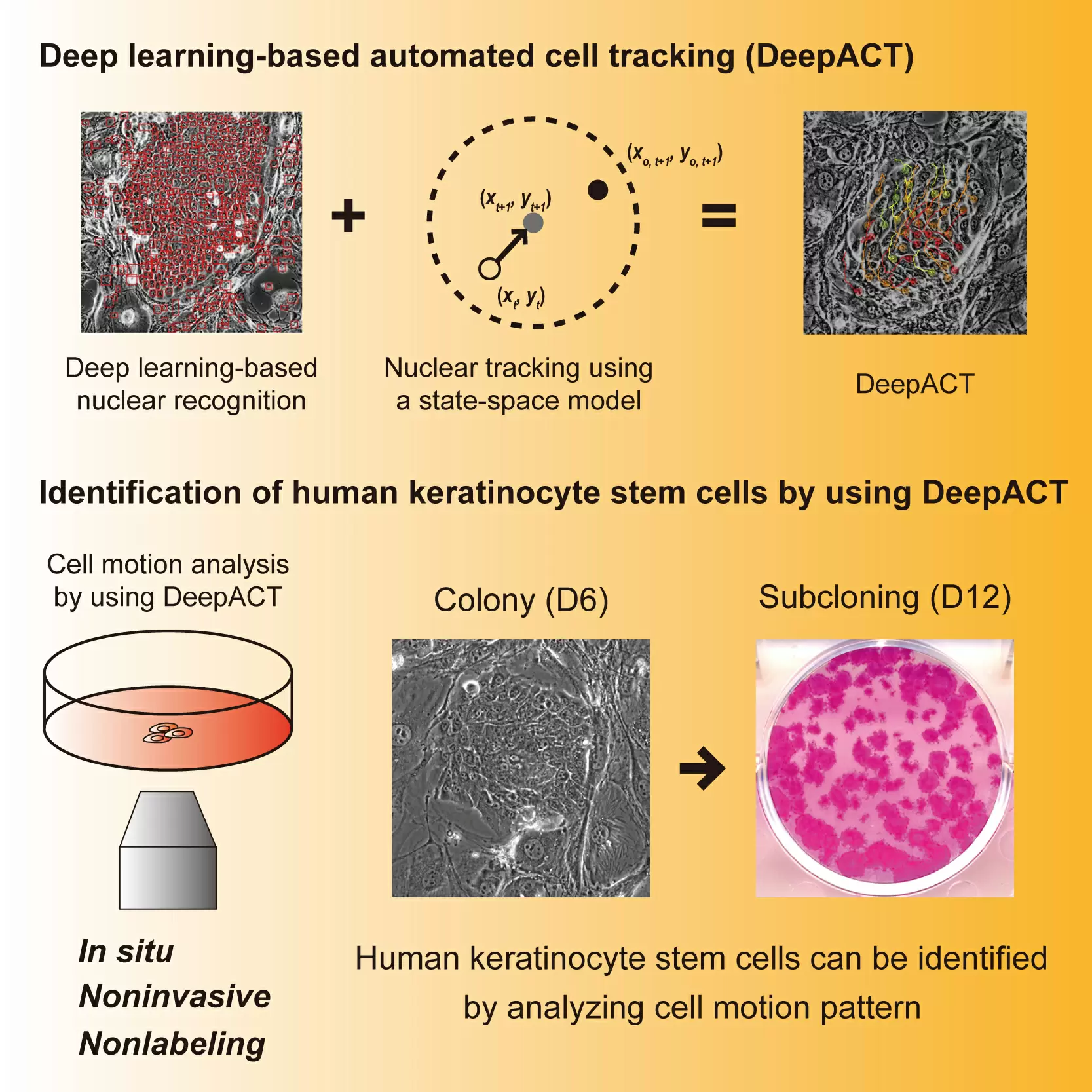In a study published in February in Stem Cells, researchers from Tokyo Medical and Dental University (TMDU) reported that their AI system, called DeepACT, can identify healthy, productive skin stem cells with the same accuracy that a human can.
Keratinocyte (skin) stem cells are used to treat inherited skin diseases and to grow sheets of skin that is used to repair large burns.
“Keratinocyte stem cells are one of the few types of adult stem cells that grow well in the lab. The healthiest keratinocytes move more quickly than less healthy cells, so they can be identified by the eye using a microscope,” explains Takuya Hirose, one of the lead authors of the study. “However, this method is time-consuming, labor-intensive, and error-prone.”
To address this, the researchers aimed to develop a system that would identify and track the movement of these stem cells automatically.
“We trained this system through a process called ‘deep learning’ using a library of sample images,” says the co-lead author, Jun'ichi Kotoku. “Then we tested it on a new group of images and found that the results were very accurate compared with manual analysis.”
In addition to detecting individual stem cells, the DeepACT system also calculates the ‘motion index’ of each colony, which indicates how fast thecells at the central region of the colony move compared with those at the marginal region. The colonies with the highest motion index were much more likely than the colonies with lower motion index to grow well, making them good candidates for generating sheets of new skin for transplantation to burn patients.
“DeepACT is a powerful new way to perform accurate quality control of human keratinocyte stem cells and will make this process both more reliable and more efficient,” states Daisuke Nanba, senior author.
Given that skin transplants can fail if they contain too many unhealthy or unproductive stem cells, being able to quickly and easily identify the most suitable cells would be a considerable clinical advantage. Automated quality control could also be valuable for industrial stem cell manufacturing, to help ensure a stable cell supply and lower production costs.

Deep learning-based automated cell tracking (DeepACT) for identification of human keratinocyte stem cells.
DeepACT comprises two main modules: identifying human keratinocytes at single-cell resolution from phase-contrast images of cultures through deep learning and tracking keratinocyte motion in the colony using a state-space model. As human keratinocyte stem cell colonies exhibits a unique motion pattern, DeepACT can distinguish keratinocyte stem cell colonies from non-stem cell-derived colonies by analyzing the spatial and velocity information of cells. This system can be widely applied to stem cell cultures used in regenerative medicine and provides a platform for developing reliable and noninvasive quality control technology.


